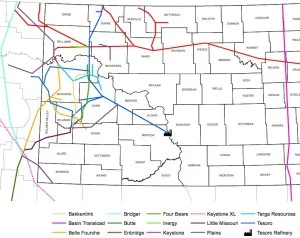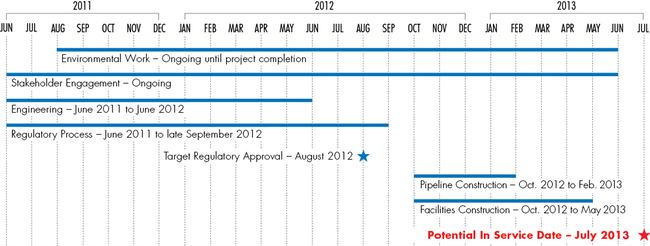A number of changes to the North Dakota Administrative Code could impact pipeline development and stripper wells in 2014. Approved by the North Dakota Industrial Commission last month, forty-seven (47) new rules were proposed, bringing the number of rules for oil and gas operations to seventy (70). According to the Department of Mineral Resources, a division of the Industrial Commission, the changes could take place as early as April 1, 2014. One particular area of the code, 43-02-03-29, addresses pipeline development in the region:
“All newly constructed underground gathering pipelines must be devoid of leaks and constructed of materials resistant to external corrosion and to the effects of transported fluids. All such pipelines installed in a trench must be installed in a manner that minimizes interference with agriculture, road and utility construction, the introduction of secondary stresses, the possibility of damage to the pipe, and tracer wire shall be buried with any nonconductive pipe installed. When a trench for an oil and gas underground gathering pipeline is backfilled, it must be backfilled in a manner that provides firm support under the pipe and prevents damage to the pipe and pipe coating from equipment or from the backfill material.”
The new regulations come at a time when increased scrutiny on pipeline development in the region is piquing. A Tesoro pipeline released approximately 20,000 bbls of crude near Tioga, ND, in October. The cause is believed to be related to corrosion.
Read more: North Dakota Oil Spill Recover Efforts Underway
NDIC's Authority to Define Stripper Wells Expanded
Yet another area of production that could see an impact are in wells defined as stripper wells. The Director of the Department of Mineral Resources, Lynn Helms, already had the authority to determine stripper well property status. The change could impact the number of wells receiving tax exemptions through stripper well status. The new regulations extend Helms's ability to determine a stripper well. Furthermore, the revised regulations account for horizontal drilling, relative to stripper wells:
"If a well that has previously qualified as a stripper well property is reentered and recompleted as a horizontal well, the stripper well property status on that well will terminate. "
Other facets of production worth noting that will be affected are with the notification of fires, leaks, spills or blowouts and underground injection wells.
Read more at dmr.nd.gov



